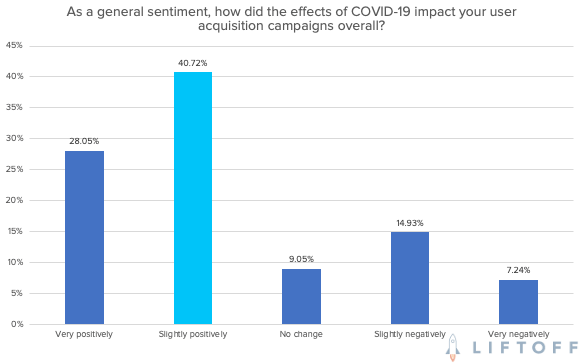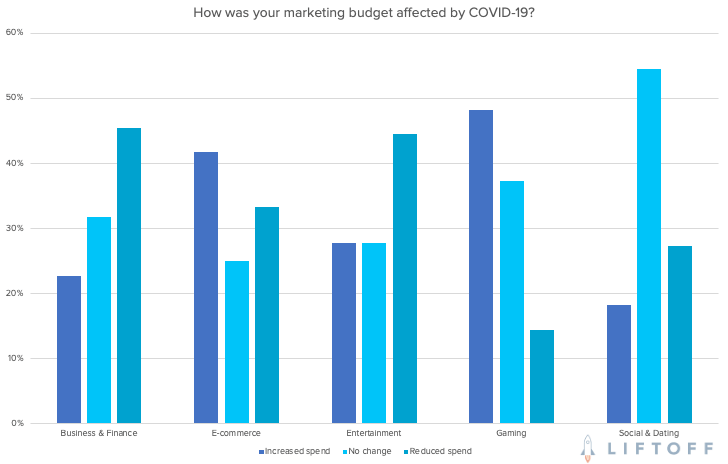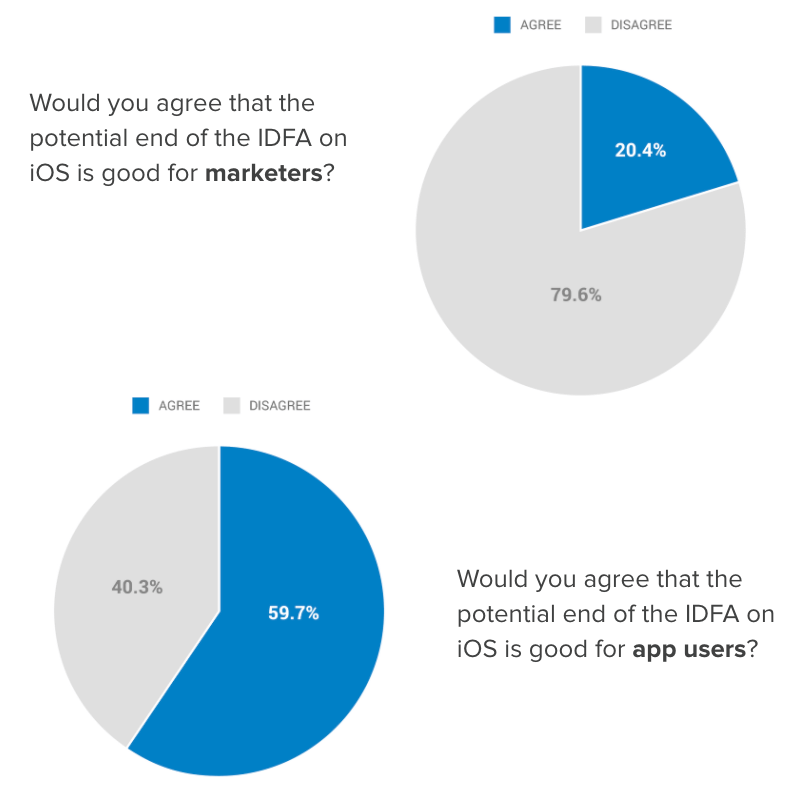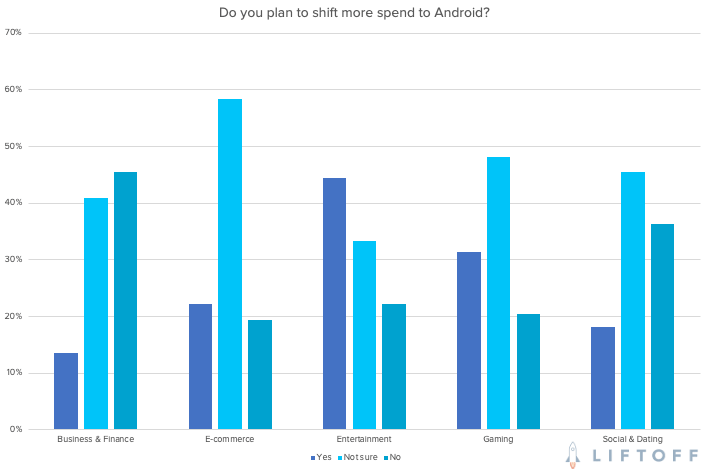The global turbulence following the wake of COVID-19 has cemented apps as a necessity in people’s lives. Mobile gaming has exploded, with Newzoo, a gaming analytics company, measuring a 13.3% year-on-year increase in growth in 2020. Meanwhile, a study from PwC, a multinational consultancy, registered flourishing m-commerce growth. The organization recorded a 45% increase in shopping via mobile following the COVID-19 outbreak. From staving off boredom to shopping without setting foot in-store, apps have become the means to keep the world engaged, connected and moving. As a result, app marketing is weathering the storm. eMarketer, a research company, reports growth for mobile ad spending in the US to increase by 4.8% (or $4.22 billion) in 2020.
The figures are glowing. But what do marketers make of their “new normal”? A recent survey of mobile app marketers, including Liftoff’s Mobile Heroes, revealed the opinions of 230 global participants that feature in our Mobile App Trends 2020 report. In this blog, we’re diving deeper into the survey to take apart the past year’s trends in detail. What did we learn? Liftoff survey data tells a surprising story.
How Did the Effects of COVID-19 Impact App Marketing?

Our survey’s first section questioned marketers on the impact COVID-19 had on efforts to acquire new users, with 69% of marketers reporting a positive effect on user acquisition. Meanwhile, 10% saw no real change, and 22% had a slightly negative to very negative impact.
The larger the app, the better the UA during COVID-19. 85% of marketers with a team of 11+ marketers reported a positive effect on UA from the pandemic. Marketers of gaming apps had the most favorable outcome of all categories, with 81% answering “slightly positively”, or better, to our survey. Business and Finance marketers were the happiest of all, with 36% stating that the pandemic had impacted their results “very positively” (versus gaming’s 28%).
The next question simply asked, “to what extent did COVID-19 and stay-at-home orders help drive more engaged users to your app?” App marketers saw good results, with 76% reporting improved engagement. For apps with large teams, 85% recorded positive engagement, while lone app marketers reported the least engagement improvements at 65% positive sentiment.
When questioned on how COVID-19 impacted app revenue, similar positive trends were reported. 64% of respondents experienced an increase in revenue during the pandemic. Gaming saw the most considerable rise, with 80% of respondents saying their revenue increased, but 67% of e-commerce and entertainment apps also noted gains during the period.

Our final COVID-19 question honed in on budgets. Traditionally, modern crises are followed by a reduction in ad spend as companies save cash. But in our survey, we found the opposite trend. When asked, “How was your marketing budget affected by COVID-19?” only 30% of marketers reporting a decrease in ad spend. In fact, more marketers (35%) experienced an increase of app marketing budget. The largest teams saw the biggest gains (with 50% of respondents in teams of 11+ receiving more budget). Meanwhile, teams with 6-10 saw the most significant reduction, while 57% of solo marketers experienced ‘No change’ in user acquisition spend. By vertical, 48% of gaming app marketers had an increase in campaign budget, while 45% of business & finance marketers reported reduced spend.
What do Mobile Marketers Think About IDFA Changes?

The second section of our survey covered opinions of Apple’s upcoming changes to its IDFA. Our analysis began with two simple questions: whether ‘the potential end of the IDFA’ would be good for marketers, and for users? In our findings, 80% of respondents believed that changes to the IDFA will be a net negative for marketers. But for users, the IDFA change was viewed positively, with 60% agreeing with the statement that its deprecation would benefit users.
Responding positively to the user-focused statement, marketers cited that users currently, “have no idea how their data is being used.” As such, the change gives users, “increased personal control over data.” As one respondent pointed out, “the potential end of the IDFA provides more transparency and more data control for the user.”
However, a sizeable minority of marketers do not believe the change is entirely beneficial: “Users will see random, non-personalized ads, making the user experience worse for consumers,” says one respondent. Another believes that “advertisers will have more difficulty tailoring messages” which could cause a more negative impression of advertising overall. But not all respondents took a negative view: “It will be a breath of fresh air when marketers try new things to attract customers to their solutions.”
Another question we asked marketers was: Do you plan to shift more spend to Android? In context, the 2020 Mobile App Trends Report reveals how mobile user acquisition performance on iOS and Android differ, with Google’s platform offering a larger volume of installs while iOS tends to generate more revenue. We wanted to discover whether this data coincided with mobile marketer’s opinions. Here, we’ve broken down results by category to determine where more spend was likely to go.

Business & Finance and Entertainment were the only categories where opinion, positively or negatively, outweighed answers to ‘Not sure’. Business & Finance marketers would likely maintain spend on iOS, while Entertainment app marketers are eyeing a shift towards Android. Overall, 44% of app marketers are unsure of shifting their spend, though more marketers said they would shift towards Android (30%) than would not (26%).
Our survey paints a considerable picture of 2020’s app marketing challenges, and the views of marketers who have to adapt to them. While it’s certain that this year created unique challenges for the ecosystem, it’s impossible to predict how COVID-19 and IDFA changes will impact the industry in both the short and the long term.
For more findings on the trends of 2020, download the 2020 Mobile App Trends Report today. You can also discover more deep insights on our blog—or get regular updates via email by signing up to our newsletter in the sidebar.
